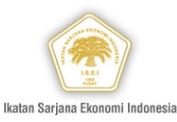Bank Stock Returns in Responding the Contribution of Fundamental and Macroeconomic Effects
(1) Department of Management, Faculty of Economics and Business University of Bengkulu,
(2) Department of Management, Faculty of Economics and Business University of Bengkulu,
Abstract
Keywords
Full Text:
PDFReferences
Aga, M., & Kocaman, B. (2008). Efficient Market Hypothesis and Emerging Capital Market: Empi-rical Evidence From Istanbul Stock Exchange. International Research Journal of Finance and Economics. Vol. 13 (10). Pp. 131-144.
Aggarwal, R. (1981). Exchange Rates and Stock Prices: A Study of the US Capital Markets under Floating Rates. Akron Business and Economic Review. Vol.12. Pp. 7-12.
Al-Abadi, I. M., & Al-Sabbagh, W. U. (2006). Interest Rate Sensitivity, Market Risk Inflationand Bank Stock Returns. Journal of Accounting-Business and Management. Vol. 13(1).Pp. 25-38.
Al-Mukit, D., M. (2012). Effects of Interest Rate and Exchange Rate on Volatility of Market Index at Dhaka Stock Exchange. Journal of Business and Technology. Vol. 7 (2). Pp.1-18.
Aurangzeb.,& Afif, K. (2012). Effect of Time on Interest Rate, Exchange Rate and Stock Return”.Journal of Finance and Economics. Vol. 86 (4). Pp. 212-229.
Bank Indonesia Regulation (PBI). (2013). No. 15/2/PBI/ 2013. Bank Indonesia Circular Letter No.6/10/PBI/ 2004.
Bank Indonesia Circular Letter No.6/23/DPNP/dated 31 May (2004) on Bank Health Assessment Procedures and regulations No.6/10/PBI/2004 BI on Banking Rating System
Baltagi, B. H. (2005). Econometric Analysis of Data Panel 3rd Edition. England. John Wiley &Sons.
Chen, S. (2011). Capital Ratio and The Cross sectional of Bank Stock Return: Evidence from Japan”.Journal of Asian Economics. Vol. 22 (2). Pp. 99-114.
Christopolous, G. A., Mylonakis, J., & Diktapanidis, P. (2011). Could Lehman Brothers Collapse Be Anticipated? An Examination Using CAMELS Rating Systems”. International Business Research. Vol. 4 (2). Pp. 11-19.
Choi, J. J.,& Elyasiani, E. (1997). Derivative Exposure and The Interest Rate and Exchange Rate Risk sof U.S. Banks. Journal of Financial Services Research. Vol. 12 (2/3). Pp. 267- 286.
Czaja, G. M., Scholz, H., & Wilkens, M. (2010). Interest Rate Risk Reward In Stock Return of Financial Corporations: Evidence From Germany. European Journal Management. Vol.16 (1). Pp. 124-154.
Ervani, E. (2010). Analisis Pengaruh Capital Adequacy Ratio, Loan to Deposit Ratio, dan Biaya Operasional Bank Terhadap Profitabilitas Bank Go Public di Indonesia Periode 2000-2007. JEJAK Journal of Economic and Policy. Vol. 3 (2). Pp.165-171.
Faff, W. R., Hodgson, A., & Kremmer, L. M. (2005). An Investigation on the Impact of Interest Rate and Interest Rate Volatility on Australian Financial Sector Stock Return Distribution. Journal of Business and Accounting. Vol. 32 (5). Pp. 1001-1031.
Gujarati, N. D. (1995). Basic Econometrics, Third Edition. New York: Mac Graw Hill.
Gujarati, N. D., & Porter, C. D. (2009). Basic Econome-tric, Fifth Edition. New York: Mac Graw Hill. Irwin.
Gunsel, N. (2007). Financial Ratios and The Proba-bilistic Prediction of Bank Failure in North Cyprus European Journal Scientific Research. Vol. 18 (2). Pp. 191-200.
Hartono, J. (2007). Metode Penelitian Bisnis, Salah Kaprah dan Pengalaman Pengalaman. Yogyakarta. BPFE. Indonesia.
Hays, H . F., De Lurgio, A. S., & Gilbert, H. A. (2011). Efficiency Ratios and Community Bank Performance. Journal of Finance and Accountancy. Vol. 5 (1). Pp.1-15.
Insukindro. (1998). The Syndrome of R2 in Time Series Regression Linear Model. Jurnal Ekonomi dan Bisnis Indonesia. Vol. 13 (4). Pp. 1-11.
Jawaid, T. S., & Ui Haq, A. (2012). Effect on Interest Rate Exchange Rate and Their Volatilityon Stock Prices: Evidence From Banking Industry of Pakistan. Theoritical and Applied Economics. Vol. 21. (8). Pp. 153-166.
Kamaludin, Darmansyah, Usman, B. (2015). Deter-minan Non Performing Loan (NPL) Pada Industri Perbankan (Bukti Empiris Perusahaan Go Publik di Bursa Efek Indonesia). Jurnal Aplikasi Manajemen. Vol. 13. No. 4. Pp. 547-556.
Kanas, A. (2008). A Multivariate Analysis Regime Switching Approach to the Relation Between The Stock Market, The Interest rate dan Output. International Journal of Theoritical and Applied Science. Vol. 11 (7). Pp. 657-671.
Kouser, R., & Saba, I.,(2012). Gauging the Financial Performance of Banking Sector Using CAMEL Model: Comparison of Conventional, Mixed and Pure Islamic Banks in Pakistan. International Research Journal of Finance and Economy. Vol. 82 (2). Pp. 67-88.
Laghari, K. M., Jalbani, A. A., & Rani, I. (2011). Comparative Analysis of NBP & MCB Performance Under CAMELS Model. Interdiciplinary Journal of Contemporary Research in Business. Vol. 3(1). Pp.1106-1128.
Nurazi, R.(2003).Investigation of the Use of CAMELS Ratios as Good Predictors in Predicting Bank Failure (Indonesian Case). A Dissertation for the Degree of Doctor of Business Administration at Southern Cross University, New South Wales, Australia.
Nurazi, R & Evans, M. (2005). An Indonesian Study of the Use of CAMEL(S) Ratios as Predictors of BankFailure. Journal of Economic and Social Policy. Vol. 10. (1). Pp. 1-23.
Nurazi, R., Kananlua, S., K., & Usman, B. The Effect of Google Trend as Determinant of Return and Liquidity in Indonesian Stock Exchange. Jurnal Pengurusan. Vol. 45. Pp. 1-17.
Nurazi, R., Santi, F., Usman, B. (2015). Tunneling: Evidence from Indonesia Stock Exchange. Asian Academy of Management Journal of Accounting and Finance. Vol. 11 (2). Pp. 127-150.
Nurazi, R & Usman, B. (2015). Public Attention and Financial Information as Determinants of Firms Performance in the Telecommunication Sector. Jurnal Keuangan dan Perbankan. Vol. 19 (2).Pp. 235-251.
Oktavilia, S. (2008). Deteksi Dini Krisis Perbankan Indonesia: Identifikasi Variabel Makro dengan Model Logit. JEJAK Journal of Economic and Policy Vol. 1 (1). Pp. 50-62.
Prishardoyo, B. & Karsinah. (2010). Analisis Faktor-Faktor yang Mempengaruhi Volume Transaksi Pasar Uang Antar Bank di Indonesia Tahun 1983–2007. JEJAK Journal of Economic and Policy Vol.3 (2). Pp. 123-131.
Sangmi, D. M. (2010).Analyzing Financial Performance of Commercial Banks in India: Applicationof CAMEL Model. Pakistan Journal Commercial Social Science. Vol. 4 (1). Pp. 10-55.
Ross. S. (1976). The Arbitrage Theory of Capital Asset Pricing. Journal of Economic Theory. Vol. 13. Pp.341-360.
Shanken, J., 1992. The Current State of the Arbitrage Pricing Theory. The Journal of Finance. Vol. 47(4). Pp. 1569-1574.
Sujarwo, A, A. (2015). The impact of Indonesia’s Bank Performance towards Bank’s Stock Price (Listed in Indonesia Stock Exchange from 2011-2013) Using CAMEL Analysis. iBuzz Management.Vol.3 No 2. Pp. 9-18.
Tandelilin, E. (2010). Portfolio and Investment “Theory and Its Application”. Yogyakarta, Kanisius. Indo-nesia.
Usman, B., & Tandelilin, E. (2014). Internet Search Traffic and Its Influence on Liquidity and Returns of Indonesia Stocks: An Empirical Study. Journal of Indonesian Economy and Business. Vol. 29(3). Pp. 203-221.
Verma, P., & Jackson, O. D. (2008). Interest Rate and Bank Stock Return Asymetry Evidence From US Banks. Journal Economics Finance. Vol. 32 (4). Pp. 105-118.
Widarjono, A. (2009). Introduction of Econometric and Its Application. Yogyakarta. Ekononisia. Faculty of Economic Islamic University of Indonesia.
Winarno, W. W. (2009). The Econometric Analysis and Its Application in E-views 5th edition. UPP. STIM YKPN. Indonesia.
Refbacks
- There are currently no refbacks.

This work is licensed under a Creative Commons Attribution 4.0 International License.






